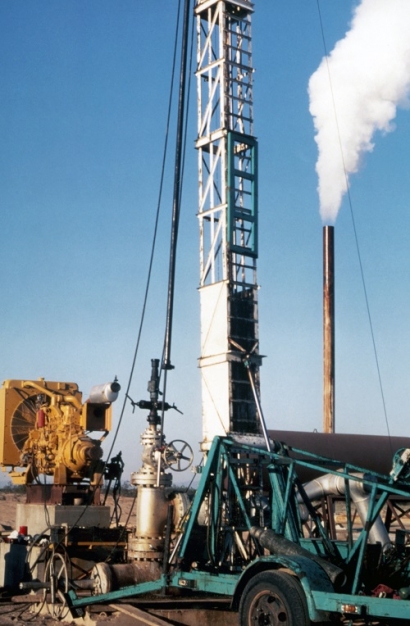“Geothermal energy is a clean and efficient base-load energy resource, making it an important part of our nation’s diverse energy portfolio,” U.S. Secretary of Energy Rick Perry said. “Developing new, efficient drilling technologies will reduce these costs and increase the availability of this domestic renewable energy resource.”
Currently, American geothermal electricity production is located solely in the western states, where conventional geothermal resources put about 3.8 GW of electricity on the grid. It has the potential to expand through hydrothermal and enhanced geothermal systems, which could tap into an estimated 100 GW of currently inaccessible resources and remove the geographic barriers of conventional geothermal resources.
Technological innovation is necessary to economically convert these resources into cost-effective energy resources. The awardees will focus on early-stage R&D projects exploring innovative technologies for drilling geothermal wells that show the ability to reduce non-drilling time, improve rates of penetration, and identify methods to accelerate the transfer of geothermal drilling and related technologies from the laboratory to the marketplace.
The selected projects include:
- Argonne National Laboratory (Argonne, Illinois): Developing more advanced, low-cost materials using superhard nano-composites combined with ultrafast surface treatment to create new drill bits with tunable properties capable of doubling rates of penetration (ROP) for drilling geothermal wells.
- General Electric Company, GE Global Research (Niskayuna, New York): Developing and testing a new directional drilling orientation sensor capable of operating at 300°C for 1000 hours; this will enable measurement-while-drilling (MWD) at the significantly higher temperatures needed for geothermal drilling than current tools.
- Oklahoma State University (Stillwater, Oklahoma): Developing a new detailed model for common drill bits (PDC) based on tracking cutter wear from rock/bit interactions and then design a system to optimize geothermal drilling based on real-time data from that model.
- Sandia National Laboratories (Albuquerque, New Mexico): Developing sensing tools, algorithms, and actuators for an intelligent drilling architecture which optimizes how deep the drill cutter goes in real-time, leading to longer life for down-hole drilling components, reduced unplanned trips, and more consistent drilling rates.
- Sandia National Laboratories (Albuquerque, New Mexico): Developing and testing a new all-metal down-hole motor that turns drilling fluid flow into torque; this motor will remove current temperature limitations, reduce vibrations, and enable directional drilling into high-temperature geothermal reservoirs.
- Texas A&M Engineering Experiment Station (College Station, Texas): Developing and testing a new drill bit system that uses nanosecond micro-plasma discharge to create localized shock waves which initiate micro-cracks ahead of the bit, making it easier to cut rock; this system is capable of doubling ROP for drilling in geothermal wells.
- University of Oklahoma (Norman, Oklahoma): Developing and testing smart lost circulation materials (LCM) that use shape memory polymers activated by geothermal temperature to prevent the loss of fluid into fractured rock next to the drilled wellbore; the smart LCM expands within the fractures to reduce non-drilling time (NDT) and strengthen the wellbore in high temperature geothermal drilling operations.
DOE’s Geothermal Technologies Office supports early-stage R&D to achieve necessary technological breakthroughs. Learn more about DOE’s Geothermal Technologies Office HERE.


